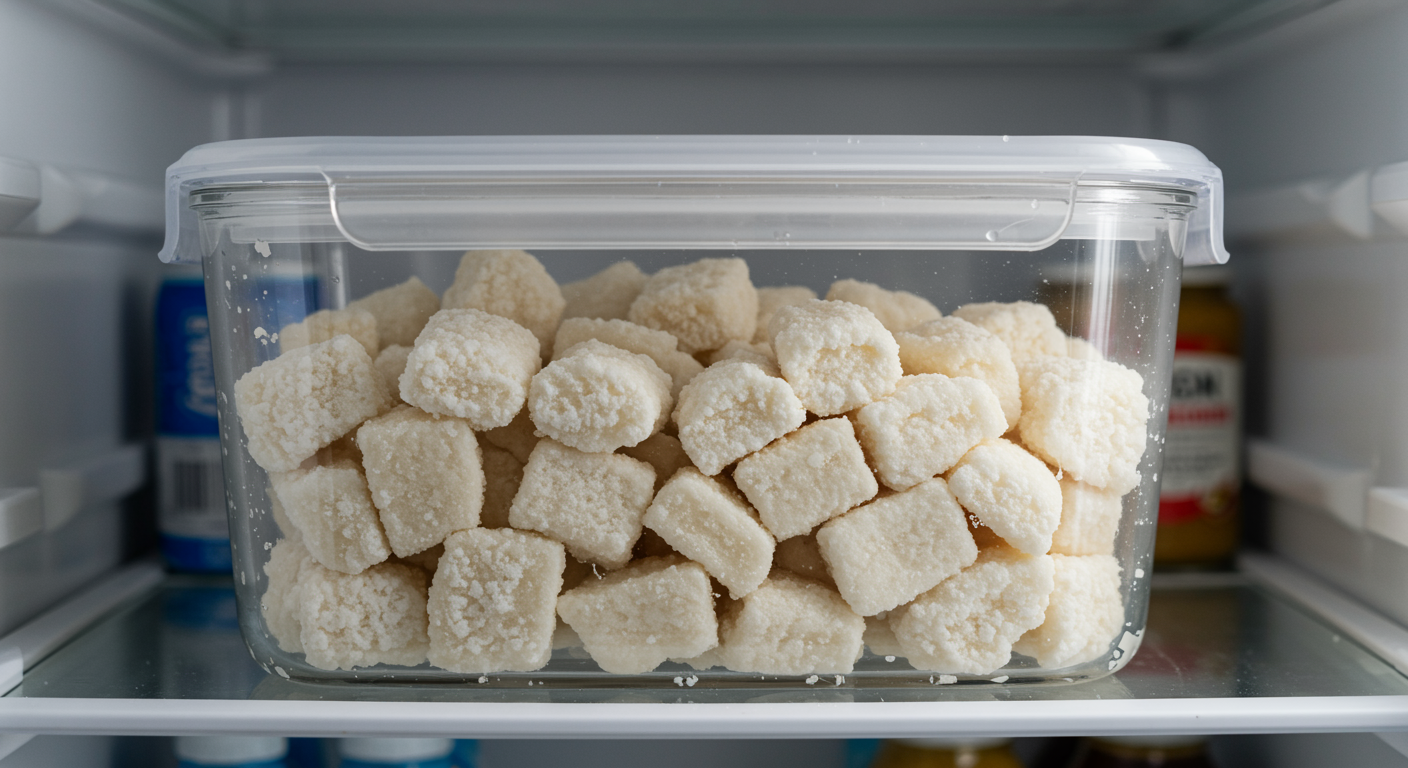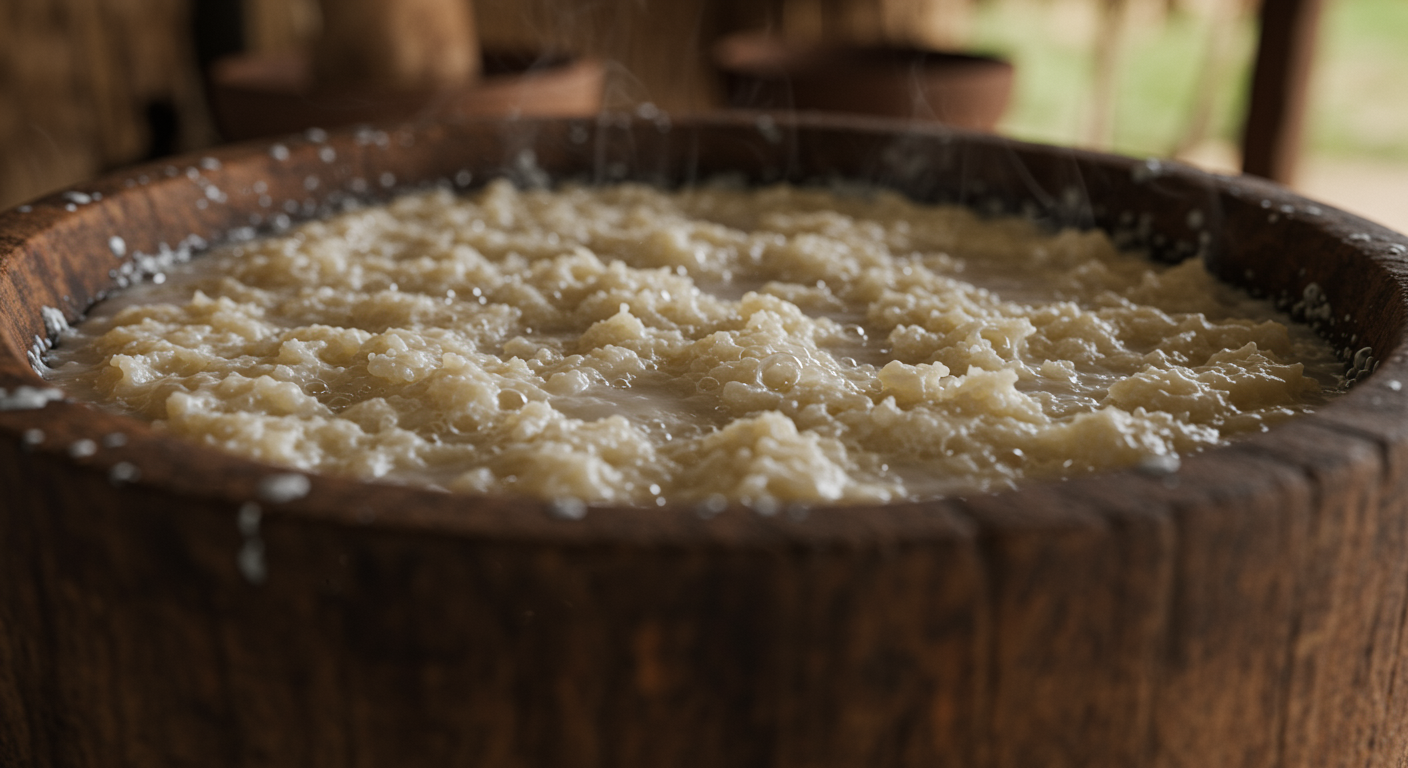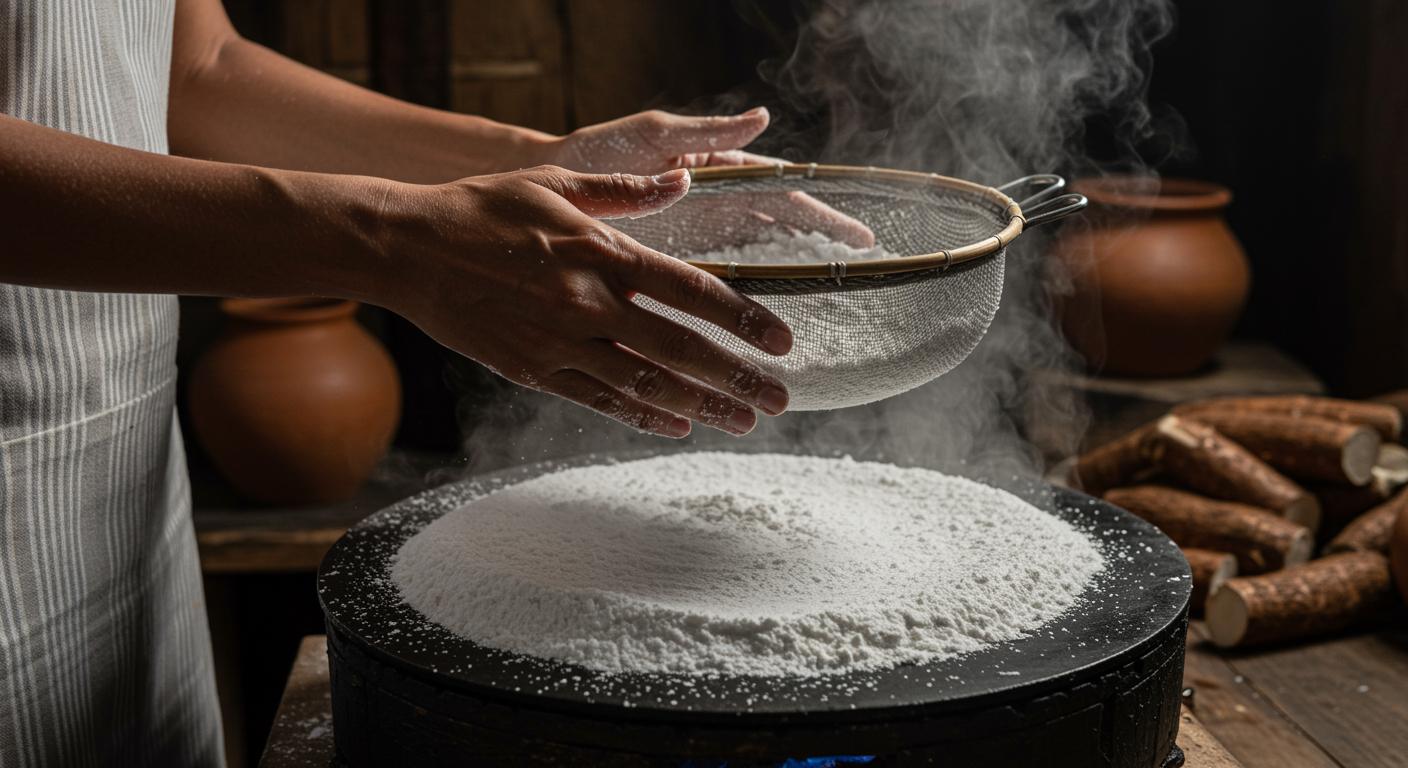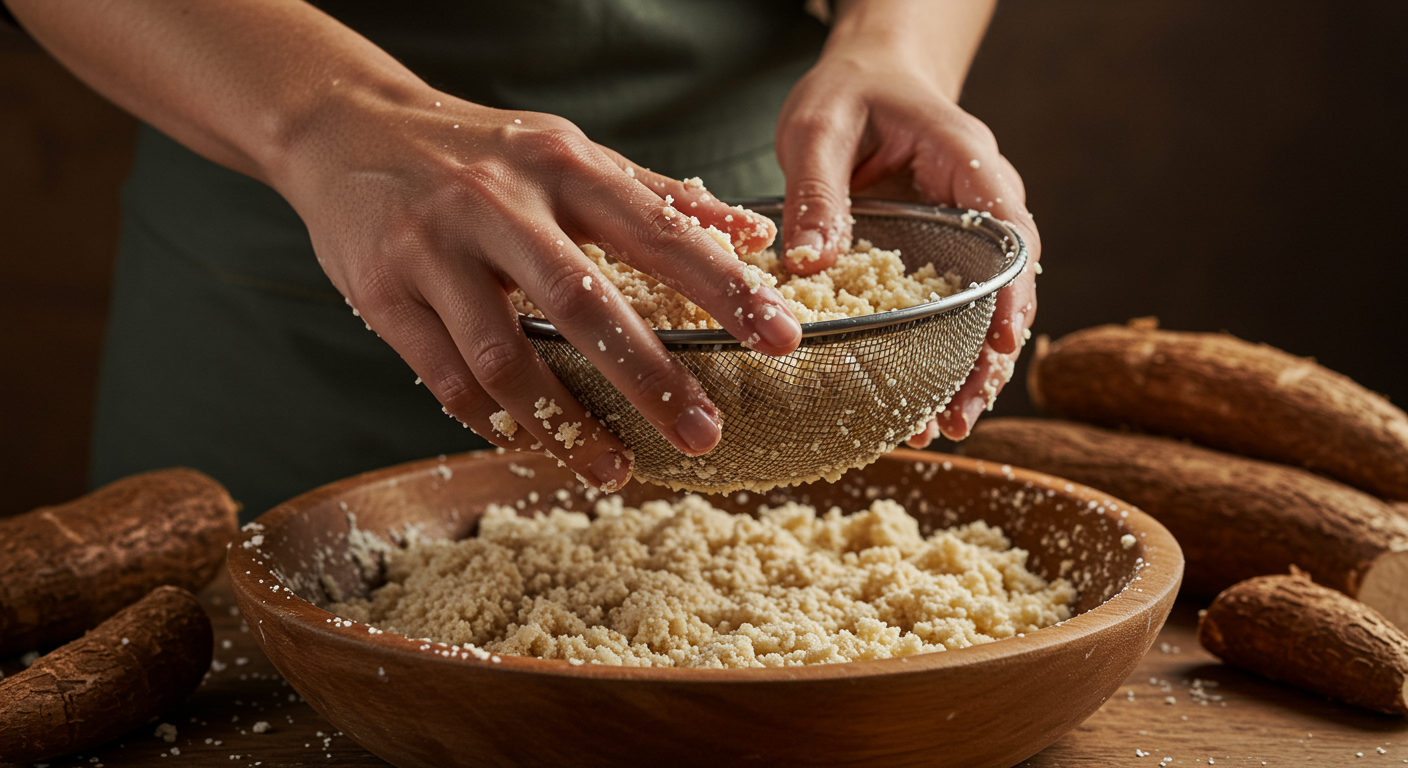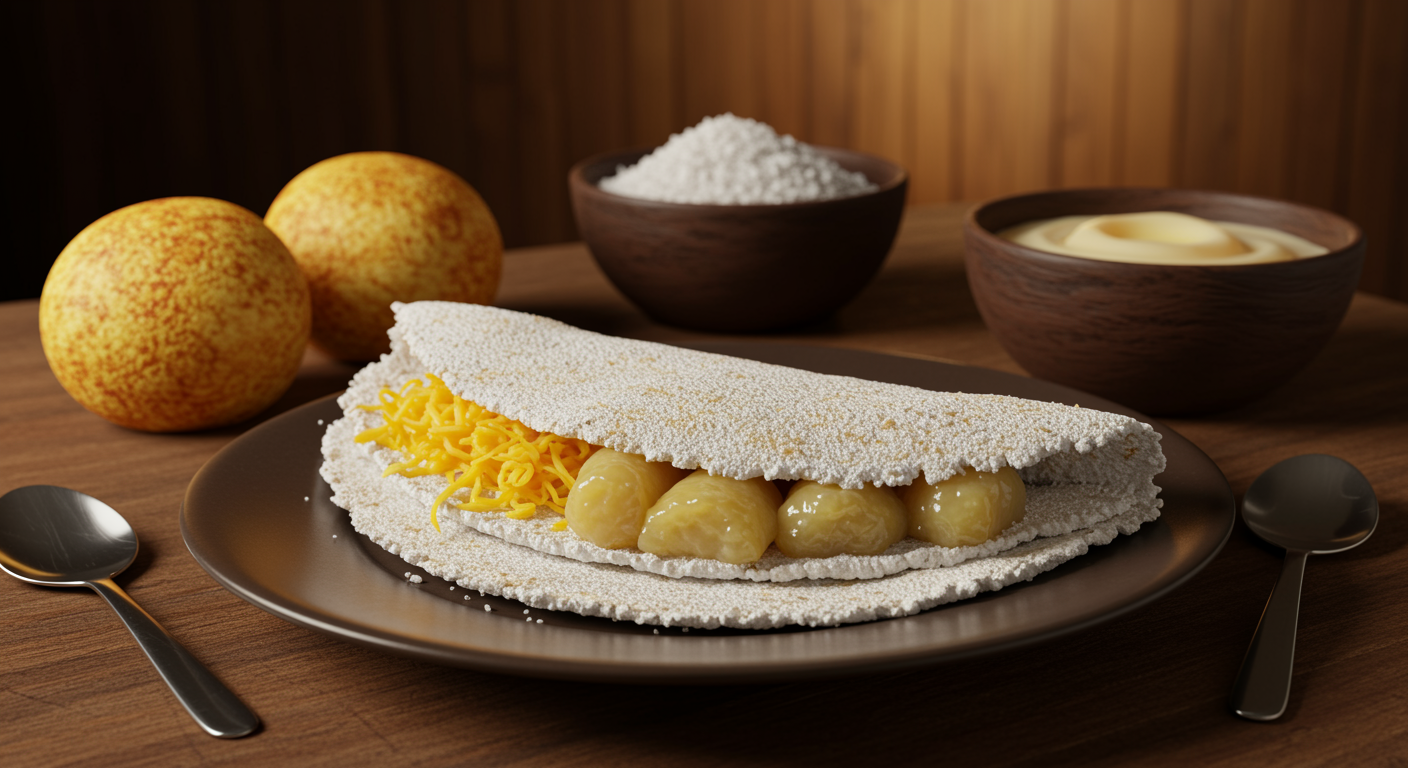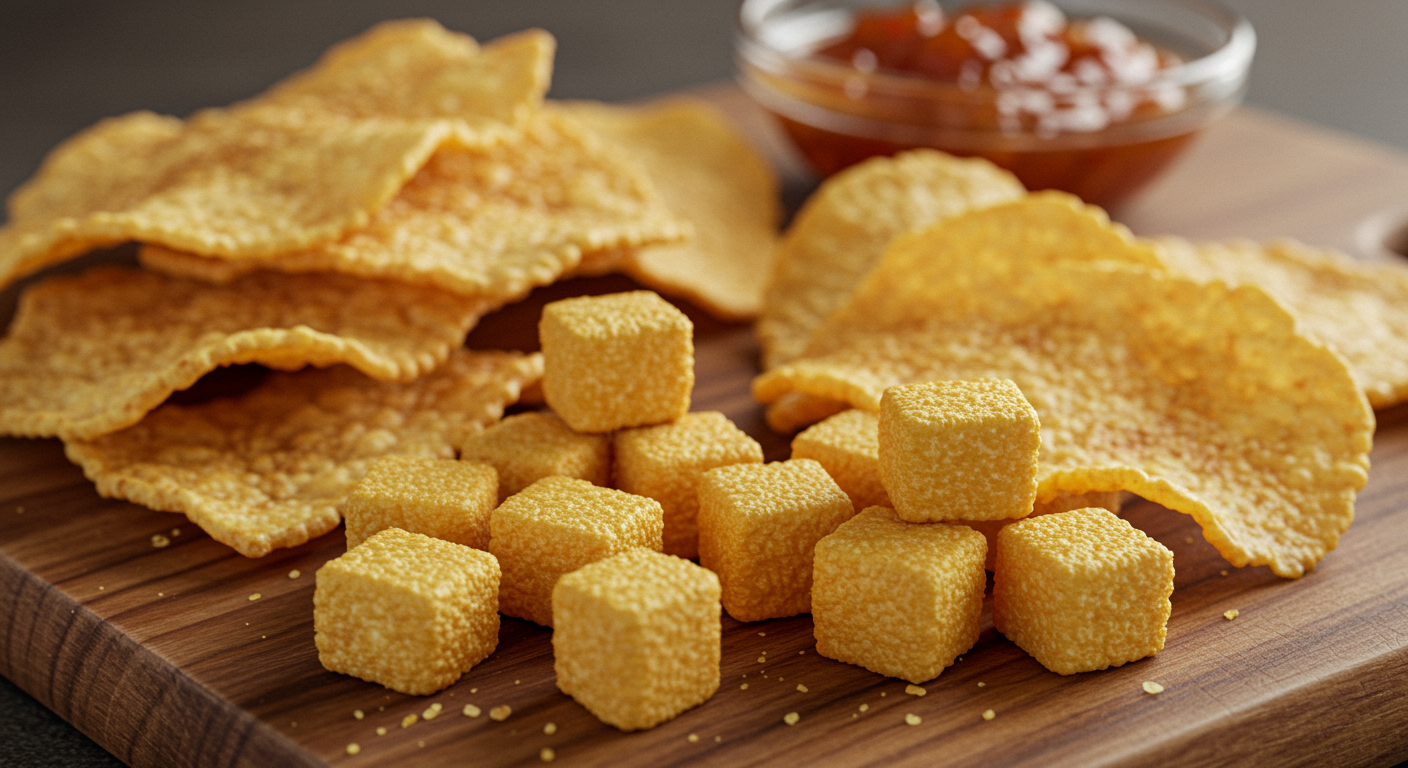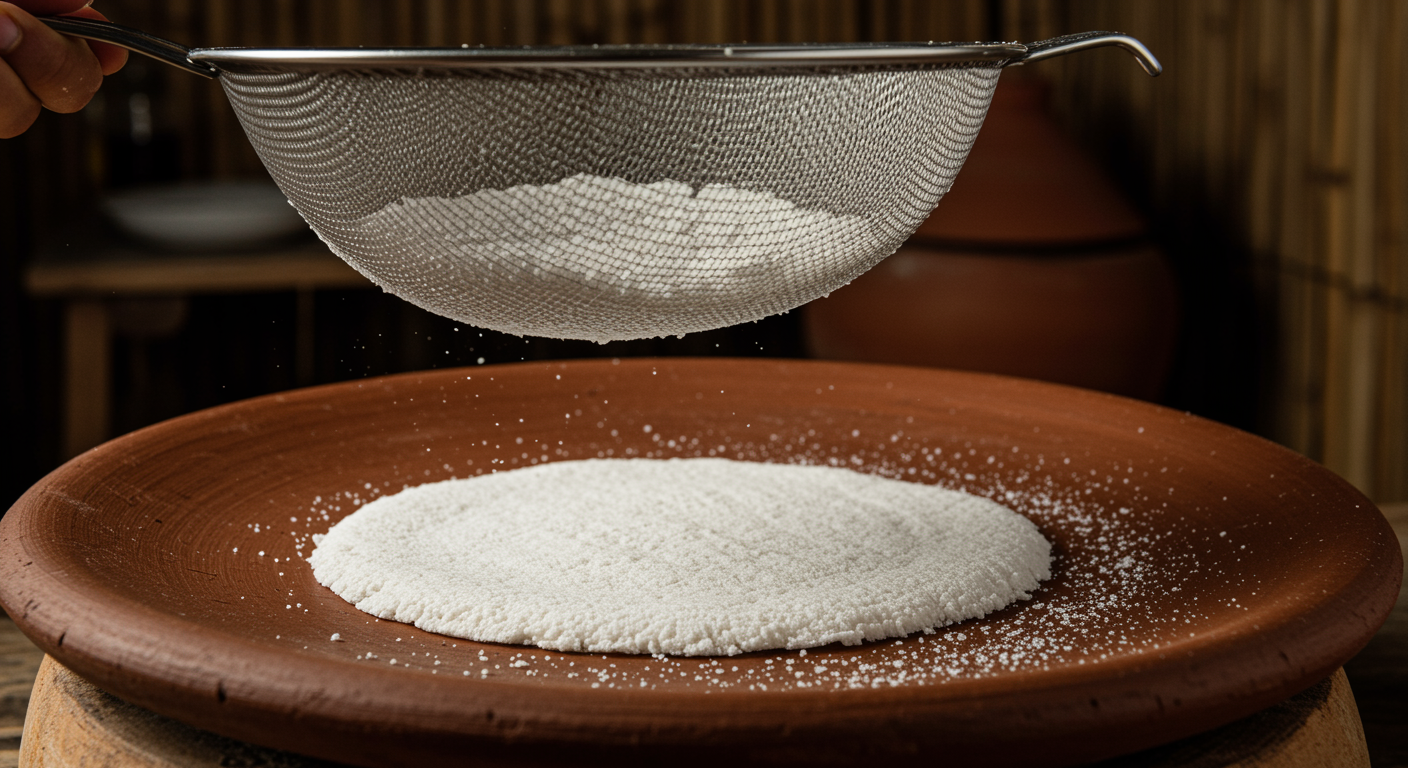Tapioca goma, the hydrated starch derived from the versatile cassava, stands as the very heart of a beloved Bahian delicacy. Its inherently delicate texture and subtle, earthy flavor are not just characteristics; they are paramount to the authenticity and enjoyment of the final tapioca. Whether one has meticulously prepared this goma from scratch, transforming raw cassava through an intricate traditional process, or has acquired a fresh batch from a local producer, its proper preservation becomes a critical skill. Improper storage, regrettably, can lead to a host of detrimental issues, ranging from the development of undesirable odors and off-flavors to outright spoilage and a fundamentally compromised texture. Any of these outcomes directly diminishes the culinary experience and can even lead to waste. Within the rich and vibrant culinary tradition of Bahia’s interior, where tapioca is not merely a dish but often a daily staple and a cornerstone of local diets, possessing the knowledge of how to store goma correctly is arguably as important as understanding the nuances of how to prepare it. This essential skill ensures that this incredibly versatile ingredient remains fresh, viable, and ready to transform into countless delicious variations whenever inspiration strikes, fostering both culinary excellence and food security.
This comprehensive guide is dedicated to exploring effective storage strategies for tapioca goma. Our focus will be on methods that not only prolong its inherent freshness but also meticulously preserve its ideal, fine, and slightly moist consistency. We will delve into detailed techniques for short-term refrigeration, examine key considerations vital for maintaining quality throughout its storage life, and offer practical, actionable tips for reviving goma that might have inadvertently lost some of its initial pristine freshness. By thoroughly mastering these preservation techniques, individuals and small producers can confidently ensure that their tapioca goma is consistently at its absolute best, perpetually ready to deliver that authentic Bahian taste and the perfectly delicate texture that makes tapioca so uniquely appealing.
Understanding Tapioca Goma’s Sensitivity
Tapioca goma is, at its core, a wonderfully natural and minimally processed product. However, this very naturalness renders it quite sensitive to a variety of environmental factors. Unlike highly dried flours or more industrially processed ingredients that boast extended shelf lives, goma’s significant moisture content and its delicate structure mean it lacks robust inherent stability. Recognizing and fully comprehending these sensitivities is therefore the absolute first and most crucial step toward implementing truly effective and reliable preservation methods. By gaining a deep understanding of the specific environmental elements that adversely affect goma, one can proactively and strategically implement storage techniques that diligently safeguard its quality and significantly extend its usable life, ensuring it remains safe and delicious for longer.
Key Factors Adversely Affecting Goma Freshness and Quality
Several pivotal factors can rapidly degrade the quality and hasten the spoilage of tapioca goma:
- Moisture Content Dynamics: While a precise level of hydration is, paradoxically, absolutely essential for the characteristic texture of tapioca goma, any imbalance can prove detrimental.
- Excessive Moisture: If the goma contains too much water, it becomes prone to excessive clumping, transforming into a sticky paste rather than individual granules. More critically, high moisture levels create an ideal environment for the rapid proliferation of various microorganisms, including bacteria and mold, accelerating spoilage. This also contributes to a soggy texture when cooked.
- Insufficient Moisture: Conversely, if the goma loses too much moisture, it will become overly dry, hard, and crumbly. This makes it exceedingly difficult to work with, as it will not bind properly on the griddle, resulting in a fractured or disintegrated tapioca that lacks the desired pliability and structure. Maintaining the “wet sand” consistency—where individual granules are distinctly moist but not sticky, and the goma forms a soft, easily breakable clump when gently pressed—is the ultimate goal.
- Temperature Exposure: Elevated temperatures are unequivocally the primary adversary of fresh goma. Heat dramatically accelerates both natural enzymatic fermentation processes and the rapid growth of spoilage-causing bacteria. This expedited activity invariably leads to swift spoilage, the development of distinctly unpleasant off-flavors (often sour or tangy), and a characteristic sour smell. The consistently cool environment of a refrigerator is therefore not merely beneficial but absolutely vital for effectively inhibiting these degradation processes, significantly extending the goma’s edible lifespan.
- Air Exposure and Oxidation: Prolonged exposure to ambient air, particularly over extended periods, can have multiple negative effects.
- Drying Out: Air circulation directly causes the evaporation of moisture from the goma, leading to its desiccation and loss of delicate texture.
- Odor Absorption: Goma, being a neutral starch, is highly susceptible to absorbing strong, undesirable odors from its surroundings (e.g., from strong-smelling foods like onions, garlic, or fermented items stored nearby).
- Oxidation: While less pronounced than with fats, prolonged air exposure can also contribute to subtle oxidative changes, potentially affecting the nuanced flavor profile.
An airtight seal is therefore not just a recommendation but an essential requirement to meticulously protect the goma’s intrinsic integrity and sensorial qualities.
- Microbial Contamination: The introduction of any foreign particles, even microscopic ones, such as remnants from dirty utensils, unwashed hands, or dust, can introduce various bacteria, yeasts, or mold spores into the goma. These microorganisms, once introduced, will inevitably begin to multiply, drastically reducing the goma’s overall shelf life and rendering it unsafe for consumption. Consequently, maintaining stringent hygiene standards throughout all stages of handling, preparation, and storage is not merely important but absolutely paramount for ensuring food safety and preserving the goma’s quality.
Critical Signs of Spoilage: What to Look For
Knowing how to accurately identify spoiled goma is an indispensable skill for food safety and preventing illness. Always conduct a thorough sensory inspection of your goma before each use:
- Distinct Off-Odor: The most immediate and often clearest indicator of spoilage is a strong, pungent, sour, or fermented smell that deviates significantly from the neutral, very slightly starchy scent of fresh, healthy goma. If in doubt, trust your nose.
- Visible Discoloration or Growth: While fresh goma is uniformly white, any visible signs of mold—appearing as green, black, pink, or fuzzy patches—or a significant, widespread yellowing, graying, or other discoloration of the product indicates spoilage. If any such growth is present, the goma should be discarded immediately without hesitation.
- Slimy or Unusually Sticky Texture: If the goma, instead of feeling like individual moist granules, feels excessively slimy, gooey, or unusually sticky and pasty to the touch, its integrity is likely compromised due to bacterial activity.
- Hard, Unresponsive Lumps: While some minor clumping can naturally occur, if lumps are excessively hard, resistant to breaking down even with gentle manipulation, or possess an altogether unusual, firm texture, it serves as a strong warning sign of advanced degradation.
By remaining vigilant and attentive to these critical factors and specific warning signs, you can effectively ensure that only fresh, high-quality tapioca goma ever makes it to your griddle, thereby guaranteeing the best possible culinary outcome and upholding the esteemed standards of authentic Bahian tapioca.
Short-Term Storage: Refrigeration for Optimal Freshness
For immediate daily use or effective storage lasting up to a week, refrigeration stands as the most efficient, practical, and universally recommended method for preserving tapioca goma. The consistent low temperatures of a refrigerator effectively slow down the metabolic processes of undesirable microorganisms, thereby significantly extending the freshness and usability of the hydrated starch without causing any significant compromise to its delicate, characteristic texture. Mastering this seemingly simple yet highly effective technique ensures that your goma is consistently at peak freshness, perpetually ready to be transformed into a quick, delicious, and authentic tapioca whenever desired.
The Ideal Refrigeration Method: A Step-by-Step Approach
To maximize the benefits of refrigeration, follow these detailed steps:
- Selection of an Appropriate Airtight Container:
- Container Type: Always opt for a clean, completely dry, and impeccably airtight container. Materials such as food-grade plastic or glass are excellent choices. Glass containers are frequently preferred by many due to their inert nature; they do not absorb any residual odors, are resistant to staining, and, crucially, allow for easy visual inspection of the goma’s condition without needing to open the lid.
- Filling Technique: Carefully transfer the freshly prepared and ideally sieved tapioca goma into your chosen container. Avoid packing the goma too tightly; leaving a small amount of headspace at the top allows for minor expansion and facilitates easier handling later.
- Secure Sealing: Ensure that the lid of the container is securely and tightly fastened. An airtight seal is not just a recommendation; it is an absolutely critical measure. It serves multiple vital functions: preventing precious moisture loss from the goma, effectively keeping airborne contaminants (such as dust or stray spores) out, and, perhaps most importantly, protecting the goma from absorbing any strong, undesirable odors emanating from other foods stored within the refrigerator (e.g., strong cheeses, onions, garlic, or highly spiced dishes).
- Strategic Placement within the Refrigerator:
- Optimal Zone: Store the sealed container in the coolest and most consistent temperature zone of your refrigerator. Typically, this is towards the back of the main shelving area, away from the door. Ideal temperatures for inhibiting bacterial growth range consistently between 0°C and 4°C (32°F and 40°F).
- Avoid Temperature Fluctuations: Explicitly avoid placing the goma container on the refrigerator door shelves. These areas experience the most significant and frequent temperature fluctuations due to repeated opening and closing of the door, which can stress the goma and accelerate spoilage.
- Recommended Duration of Storage:
- Timeframe: Properly stored tapioca goma, under optimal conditions, can realistically remain fresh and perfectly usable in the refrigerator for approximately 3 to 5 days. In some cases, depending on its initial freshness and the efficiency of your specific refrigerator, it might even last comfortably up to a full week.
- Sensory Check: Regardless of the timeframe, it is an absolute best practice to always use your senses—your sense of smell and sight—to meticulously check for any potential signs of spoilage before each and every use. This vigilance is your final safeguard against consuming compromised goma.
The Scientific Principle Behind Refrigeration’s Effectiveness
Refrigeration functions by significantly lowering the ambient temperature surrounding the goma. This crucial reduction in temperature achieves several vital objectives:
- Inhibition of Bacterial Growth: The vast majority of food spoilage bacteria and other microorganisms thrive and multiply rapidly at warmer, room-level temperatures. By cooling the goma to low, consistent temperatures, the metabolic activity and reproduction rates of these harmful organisms are drastically slowed down, effectively delaying the initial onset of spoilage and extending the goma’s palatable life.
- Reduction of Enzymatic and Fermentation Processes: The natural starches present in the goma are susceptible to slow enzymatic degradation and fermentation over time, particularly when exposed to warmer temperatures. Refrigeration actively minimizes these biochemical processes, thereby preventing the premature development of undesirable sour or off-flavors that can taint the pure taste of tapioca.
- Maintenance of Moisture Balance: An airtight container, when combined with a cool and stable refrigerated environment, plays a critical role in helping to maintain the delicate moisture content balance within the goma. This combined effect effectively prevents the goma from prematurely drying out and becoming crumbly, preserving its ideal “wet sand” consistency that is so essential for perfect tapioca preparation.
By diligently adhering to these simple yet profoundly effective refrigeration practices, you can confidently store your homemade tapioca goma, ensuring that its pristine fresh flavor and its perfect, characteristic texture are preserved reliably for several days, keeping it perpetually ready for your next authentic Bahian culinary creation.
Beyond Refrigeration: Advanced and Emergency Storage Solutions
While short-term refrigeration remains the primary and most effective method for preserving freshly hydrated tapioca goma, there may arise situations where a longer preservation period is desired, or an individual might need to successfully revive goma that has inadvertently lost some of its initial moisture and dried out. Understanding these advanced or emergency storage solutions can provide significantly greater flexibility in managing your tapioca supply, although it is an important caveat that freshly prepared and properly refrigerated goma generally yields the absolute best and most authentic results.
Drying Tapioca Goma for Extended Shelf Life (Long-Term Storage Strategy)
For preservation periods extending beyond a typical week, direct freezing of hydrated goma is generally not recommended. The freezing process can significantly alter its delicate cellular structure and texture upon thawing, often making it challenging to achieve the desired perfect, soft-yet-crisp tapioca. Instead, for genuine longer-term preservation, the most effective strategy involves reverting the goma to its fully dried, powdery starch form.
- Achieving Complete Drying: Following the essential sedimentation and draining phases (as detailed in Phase 3 of the comprehensive goma production guide), instead of merely light air-drying, the goal here is complete desiccation. Spread the moist starch in a very thin, even layer across a clean, dry surface. Suitable surfaces include a baking sheet meticulously lined with parchment paper or a clean, dry, breathable fabric cloth.
- Optimizing Air Circulation and Environment: Allow the starch to air dry completely. The ideal environment for this process is a cool, dark place with excellent air circulation. Depending on the ambient humidity, this thorough drying process may take anywhere from 1 to 3 days. To expedite drying and ensure uniformity, it is beneficial to gently break up any emerging clumps periodically and turn the starch over, exposing all sides to the air. It is crucial to strictly avoid direct sunlight or any source of excessive heat, as intense exposure can degrade the quality of the starch, potentially affecting its binding properties and flavor. The starch should feel utterly dry and powdery, with no discernible moisture.
- Storage of Dried Tapioca Flour: Once the goma has been completely transformed into a fine, dry powder (essentially tapioca flour), transfer it into an impeccably clean, dry, and airtight container. Store this sealed container in a cool, dark, and dry pantry. In this fully dried, stable form, tapioca flour can boast an impressive shelf life of several months, significantly extending its usability.
- Rehydration for Culinary Use: When you are ready to use this long-term stored tapioca flour for preparing tapioca, measure out the desired amount of the dry powder. Then, gradually add small amounts of clean, cold water, mixing continuously and thoroughly with your hands until it achieves the familiar, desired “wet sand” consistency. As a final, critical step, always pass the rehydrated goma through a fine-mesh sieve immediately before cooking. This ensures a perfectly uniform, lump-free “tapioca dough” ready for the griddle. This comprehensive method effectively transforms your freshly produced goma into a robust, shelf-stable ingredient that can be meticulously rehydrated on demand, providing a highly reliable and quality-preserving long-term storage solution.
Reviving Slightly Dried Goma: An Emergency Solution
It is not uncommon for refrigerated goma to gradually lose a small amount of its moisture over time, resulting in it feeling slightly too dry or crumbly. If this occurs, and provided the goma still smells fresh and shows no signs of spoilage, it can often be successfully revived to its ideal consistency:
- Careful Assessment of Dryness and Freshness: Before attempting revival, thoroughly assess the goma. If it is only slightly dry and maintains its characteristic neutral, clean smell, it is a prime candidate for rehydration. However, if the goma has become rock-hard, exhibits any signs of mold, or emits an off-odor, it is safest to discard the batch entirely to prevent any health risks.
- Gentle, Incremental Rehydration: Transfer the slightly dried goma to a clean mixing bowl. The key to successful revival is the gradual and measured addition of cold water. Drizzle very small amounts of cold water—start with half a teaspoon or a teaspoon at a time—over the goma.
- Thorough Mixing and Sensory Check: Use your clean hands to gently but thoroughly rub and mix the goma, ensuring that the added water is evenly distributed among all the granules. Continue this process, adding tiny increments of water as needed, until the goma regains its desired “wet sand” consistency. At this point, it should once again form a soft clump when squeezed in your palm but still easily break apart when lightly pressed. The texture should feel moist but not overly sticky or pasty.
- Crucial Final Sieving: As an absolutely essential step, always pass the revived goma through a fine-mesh sieve immediately before cooking. This critical action ensures that any small clumps that may have formed during the drying or rehydration process are effectively broken down, resulting in a perfectly uniform and smooth texture for your cooked tapioca. This attention to detail guarantees a consistent and delightful culinary outcome.
These advanced and emergency methods provide remarkably versatile options for managing your tapioca goma supply, ensuring that you can consistently enjoy its authentic flavor and perfect texture, whether you are planning for immediate consumption or require a reliable solution for a longer-term supply.
A Tapioca Goma Storage Checklist for Peak Quality
Implementing effective storage practices for tapioca goma is of paramount importance to meticulously maintain its quality and guarantee that every single tapioca you prepare is as fresh, authentic, and delicious as possible. This comprehensive checklist meticulously summarizes the key practices for both short-term and extended preservation, serving as an invaluable tool to help you consistently keep your homemade goma in its absolute prime condition, reflecting a true commitment to culinary excellence.
| Storage Aspect | Action / Recommendation | Key Consideration |
|---|---|---|
| Initial Goma Quality | Always begin the storage process with freshly prepared, well-processed goma. | Crucially, ensure the goma has the correct “wet sand” consistency (ideal hydration) and has undergone the final sieving step to be lump-free. Quality in equals quality out. |
| Container Choice | Select and use clean, thoroughly dry, and impeccably airtight containers. Opt for food-grade plastic or glass. | Glass containers are generally preferred due to their inertness, preventing odor absorption and allowing for easy visual inspection without opening. Ensure containers are impeccably clean to avoid microbial contamination. |
| Lid Sealing | Ensure the container lid is tightly and securely fastened. | This is critical for preventing moisture loss (drying out), guarding against air exposure, and protecting the goma from absorbing strong, undesirable odors from other foods stored in the refrigerator. |
| Refrigeration Temperature | Store the container in the coldest and most stable section of your refrigerator, ideally maintaining temperatures between 0°C – 4°C (32°F – 40°F). | Actively avoid placing goma on refrigerator door shelves, as these areas experience frequent and significant temperature fluctuations, which can accelerate spoilage. Consistent low temperature is key. |
| Short-Term Duration | For optimal quality, consume refrigerated goma within 3-5 days; a maximum of 7 days is generally the absolute limit. | Crucially, always inspect the goma meticulously for any signs of spoilage (e.g., off-smell, discoloration, unusual texture) immediately before each use, regardless of the storage duration. If in doubt, discard. |
| Handling Practices | When retrieving goma from its container, always use only clean, dry utensils. | This practice is essential to prevent the introduction of bacteria or other contaminants from hands or dirty implements, which can drastically shorten the goma’s shelf life. |
| Long-Term Storage (Drying) | For extended preservation needs (beyond one week, potentially for weeks or months), fully air dry the hydrated goma back into a fine tapioca flour. | Spread thinly in a well-ventilated area, avoiding direct sunlight or excessive heat which can degrade starch quality. Store the resulting dry tapioca flour in a sealed, airtight container in a cool, dark pantry. |
| Reviving Dry Goma | If stored goma becomes slightly dry or crumbly but remains fresh, gradually add very small amounts of cold water and mix thoroughly with hands. | This rehydration must be gradual. Always re-sieve the goma before cooking after revival to ensure perfect uniformity and texture. If any signs of spoilage are present, discard the goma. |
| Avoid Freezing Hydrated Goma | As a general rule for preserving ideal texture, it is not recommended to freeze hydrated tapioca goma. | Freezing can cause irreversible changes to the delicate structure of the starch, leading to an undesirable, often crumbly or watery texture upon thawing, making it unsuitable for authentic tapioca preparation. Prioritize drying for long-term. |
By diligently following and consistently applying this comprehensive checklist, you can confidently maximize the freshness, usability, and safety of your homemade tapioca goma. This meticulous attention to detail in storage not only prevents unnecessary waste but also guarantees that every single tapioca crafted carries the authentic taste, the perfect texture, and the profound cultural resonance of Bahia’s esteemed culinary tradition, making each and every bite a genuine testament to dedicated craftsmanship and a deep respect for ingredients.

